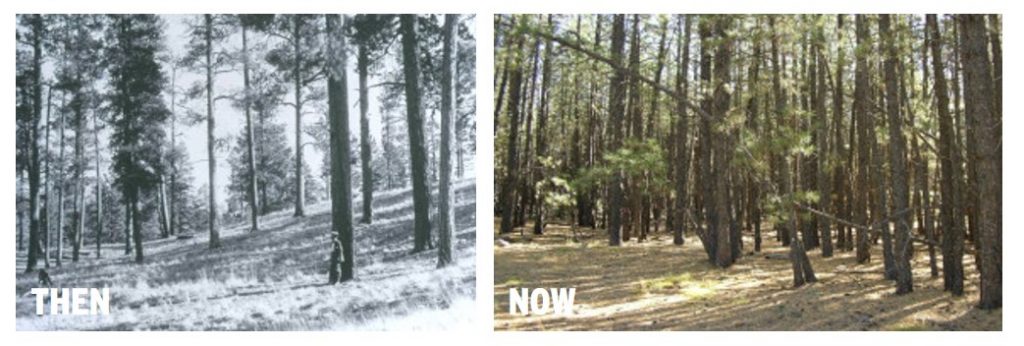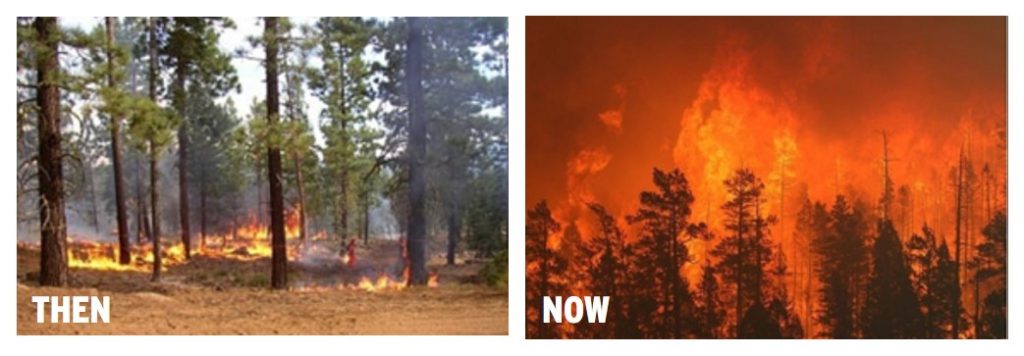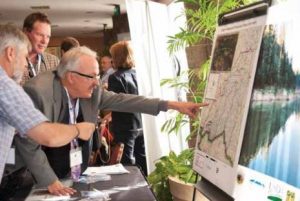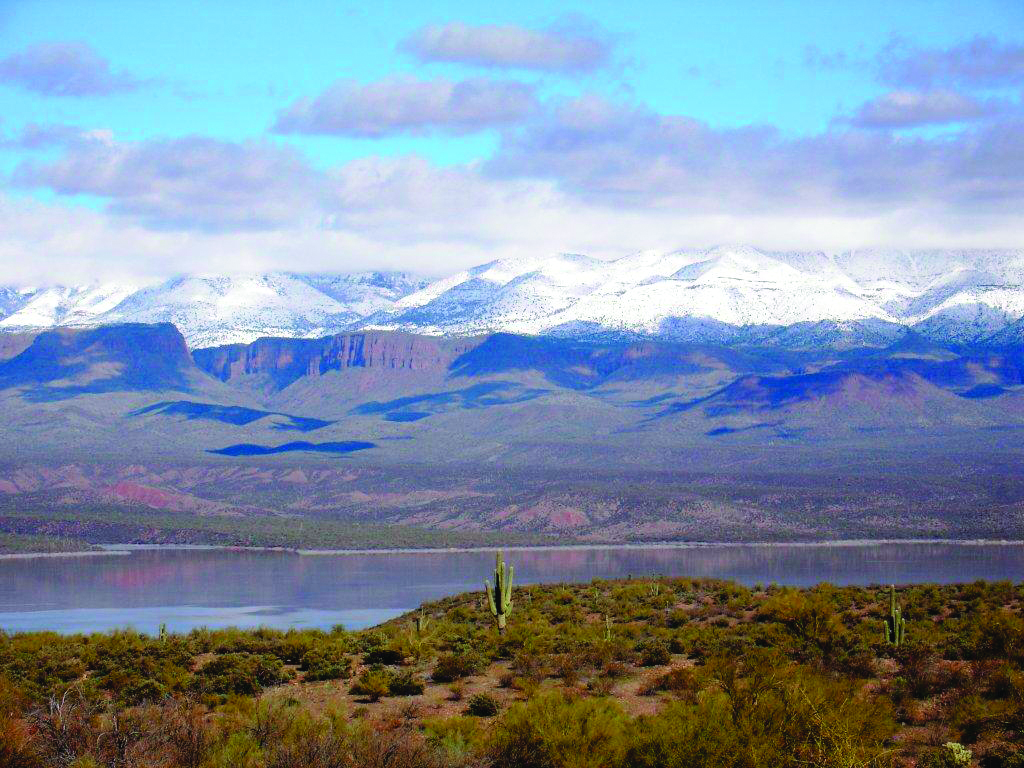Healthy, vibrant forests can feed our thirst for water. Did you know that Arizona’s forests play an important role in providing the Valley’s drinking water? Arizona’s forests and the downstream desert cities are all part of the same watershed. Watersheds link all living things by their common water source.
Yet, the path water takes from watershed to showerhead can be a complex process. Each year the snow that falls in the forests melts in the spring months and then runs downstream into the rivers and creeks that feed our water storage reservoirs on both the Salt and Verde rivers. As the water moves downstream it also recharges and protects our groundwater aquifers. Then, to meet the Valley’s water needs, the stored water is released from the reservoirs, delivered to farmlands and agricultural crops, and carried through SRP’s canals to city treatment plants where that water is made potable and delivered to your home. That’s over 200 miles of travel time for each molecule of water.
But it’s now much harder for those drops of water, delivered from the forests, to reach our taps. They need our help. Arizona’s forests have become unhealthy, and are now susceptible to extreme fire risk. Higher intensity and far-reaching wildfires, fueled by overgrown and dense forest conditions, can have far-reaching impacts. And as we have seen with the Rodeo-Chediski and Wallow fires in the last decade — the aftermath of a catastrophic fire can be devastating.


Beyond the impact of the landscape itself, the aftermath of catastrophic crown fires are also seen following ‘normal’ rain events, by means of post-fire flooding; accelerating flood flows and toxic runoff, eroding sensitive soils, depositing sediment into water storage reservoirs, and causing hundreds of millions of dollars in increased treatment costs.
But let’s be clear — fire is not the ‘bad-guy’. We want fire returned as a natural component of a restored and functioning forest. Ground fire, which burns at much lower intensities, is an important and recurring part of a functioning ecosystem; reinvigorating the soils and supporting a diversity of native plants and wildlife.
 And now, something exciting is starting to bubble up in Arizona. Truly, major fire demands an unprecedented response. And that is just what is happening. Businesses, government, cities, and Valley residents are joining together to face the proverbial fire — addressing the questions — How do we fix this? How do we pay for this? And who benefits from an improved forest and watershed?
And now, something exciting is starting to bubble up in Arizona. Truly, major fire demands an unprecedented response. And that is just what is happening. Businesses, government, cities, and Valley residents are joining together to face the proverbial fire — addressing the questions — How do we fix this? How do we pay for this? And who benefits from an improved forest and watershed?
And you know what? Our hard work is paying off! Landscape-scale restoration is being undertaken as part of the Four Forest Restoration Initiative. Businesses and Cities in the Valley are also engaging in forest health through the Northern Arizona Forest Fund. And Valley residents are helping reforest landscapes that have been severely impacted by catastrophic wildfire through the Trees for Change program.
But there is so much more to do….and everyone can help! Sure, restoring millions of acres of forest isn’t a one-man job. But all the work makes us thirsty, and our water needs your help. You can learn more here.
Rebecca Davidson is a Senior Water Rights Analyst at Salt River Project, working on issues associated with water management, watershed partnerships and development of programs that protect water resources for SRP shareholders in the Valley while also promoting landscape restoration and stream conservation. SRP is one of 20 Water – Use It Wisely partners to offer water-saving advice and programs.


